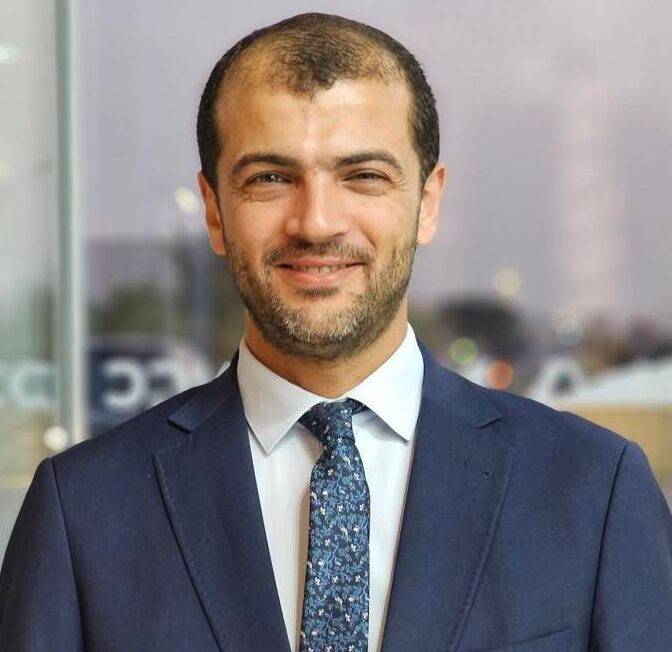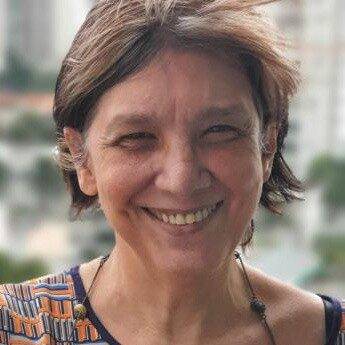The construction of the headquarters of the Universal Church of the Kingdom of God, the UCKG, in Sao Paulo invokes the biblical description of the Temple of King Solomon. In the first video we showed how this work seeks to bring Brazil closer to an Israeli narrative used in Jerusalem to try to replace the ancient historical heritage represented by the Islamic Al-Aqsa Mosque with Jewish religious symbols.
While this plan faces strong Palestinian resistance, in Brazil it manifested in the ostentatious Temple of Edir Macedo.
The imposing set of buildings and gardens is set in a gigantic area and displays columns up to 56 metres high, which rise high above the roofs and old sheds of the old working-class neighbourhood of Bras, in Sao Paulo. Part of the area was designated as the site for a housing project; four blocks of 744 units as outlined by the Housing and Urban Development Company of the State of São Paulo, according to Veja magazine in 2014. But the blueprints remain and the land was sold to the UCKG.
Faith, allegories and symbolism
The work explores elements of the Jewish faith applied in an unorthodox way to the neo-Pentecostal evangelical Christian church and its theology of prosperity, growing in Brazil.
At the inauguration, Bishop Edir Macedo, founder and head of the church, responsible for the construction, dressed in rabbi’s attire, which is reserved for Jewish religious leaders trained in the study of the Torah.
The celebration was covered in allegories and symbolism.
The guides dressed in costumes from the time attributed to King Solomon, almost a thousand years before Christ. Gold paint was used to imitate the gold which is abundant in the temple described in the Bible. Ancient olive trees, the symbol of Palestine, were imported from Uruguay to imitate the Mount of Olives, located in Jerusalem, an important place where Jesus preached to his disciples and where he was captured by soldiers of the Sanhedrin, guided by Judas the traitor.
With this religious, architectural and scenographic environment, the head of the Universal Church spoke to the invited guests, among them the then Brazilian President Dilma Rousseff.
But the great impact of the work in Brazil – inaugurated in 2014 – was the very boldness of the venture.
READ: Al-Aqsa Mosque: Islamic institutions warn Israel against expansion of Magharbeh Gate
Inspired by a trip to Israel
The building had been planned for four years, according to TV Record, a national television network linked to the Universal Church, after a visit by Bishop Edir Macedo to Israel. The film about Macedo’s life, entitled Nothing to Lose and released in March 2018, recalls what he describes as his pilgrimage to Mount Sinai in Egypt. At that time, the pastor found himself cornered by dozens of lawsuits with accusations of fraud and money laundering. After the trip, in which he said he sought spiritual help, the lawsuits were shelved, as if by a miracle, on the grounds of lack of evidence, while his detractors went from accusers to targets of the justice system, as contained in the film. Macedo complained of persecution, including from the Catholic Church.
After four years of planning, as reported by the programme Domingo Espetacular, on TV Record in 2016, another four were set aside for the construction of the temple, which mobilised up to 1,500 workers a day, in an area 126 metres long, 104 metres wide and 56 metres tall. In the temple, the main nave accommodates 10,000 people on chairs imported from Spain.
The complex has a museum which highlights what would have been the 12 tribes of Israel, screens measuring 20 square metres and a parking lot with 2,000 spaces for cars, 241 for motorcycles and 200 for buses. It has 60 apartments for pastors and 335 bathrooms for the faithful. In addition, it has 36 Children’s Bible School (EBI) rooms with capacity for 1,300 children, television and radio studios and an auditorium for 500 people, as detailed in Wikipedia.
The total cost declared was 685 million Brazilian real ($353 million at 2014 values), money attributed to donations from the faithful. The expenses could have been even greater if there had been no exemption from public fees.
READ: The myth of the Temple of Solomon and the struggle for Jerusalem
Palestinian stones
Veja Sao Paulo magazine reported, at the time, that around 40 properties were purchased in Bras to accommodate the project.
Together, these would have paid City Hall an Urban Property and Territorial Tax (IPTU) of around three million Brazilian real ($1.54 million) per year.
As a result of its religious purpose, however, the Universal do Reino de Deus sought tax exemptions. This was ratified by the Federal Senate on 17 February 2022 with constitutional amendment nº 116, which released any church, of any denomination, from paying IPTU.
Some 17,000 truck trips were needed to remove and flatten the earth. In spite of this, the work was registered with City Hall as a renovation project, which reduced the fees related to the construction. After approving the registration, the municipal official was absolved of claims of corruption.
The temple was also exempt from import duties on the decorative stones that covered the facade and that were imported from Israel.
To make the Sao Paulo temple similar to the buildings of the pre-Christian era of Jerusalem, 39,000 square metres of stones were removed from Hebron, a Palestinian city occupied by Israel.
The outcrops, cutting and hand-cutting of these stones are characteristic of the entire occupied West Bank. According to scholar Hilmi Salem, from the Institute for Research in Sustainable Development in Bethlehem, the geological group of this rock, is the backbone of the Palestinian mountains. It is collectively known as the “Stone of Jerusalem”, “Stone of the Holy Land” or “Stone of Palestine”.
Upon arriving in Brazil, the cargo was taxed at customs at around 85,000 Brazilian real in today’s values. But the Universal Church appealed, claiming that the stones are sacred and, in October 2020, the Federal Regional Court of São Paulo (TRF-3) also exempted it from this tax.
Nearly eight years since the church opened, suspicions have been raised about the proceeds of donations to the Universal Church involved in the Temple. Journalist and writer Gilberto Dimenstein, author of the book The Kingdom: The Story of Edir Macedo, reports on a lawsuit filed by bishops from the Universal Church in Angola over illegal money leaving the African state for Israel and Brazil.
In another case, a pastor who took care of the construction in São Paulo was accused by the Universal Church of fleeing with 30 million Brazilian real ($6 million) of embezzled funds. According to Isto É Dinheiro magazine, in 2021 he was in charge of building a second temple in Brazil, on a 55,000-square-metre site in Taguatinga, one of Brasilia’s satellite cities.
READ: PA official warns Israel against ‘Judaisation’ of gate to Al-Aqsa compound
Ties with the occupation of Jerusalem
Neo-Pentecostal evangelical churches have grown in the country in recent decades, gaining political strength and presence and also contributing to increasing Brazil’s ties with Israeli plans to Judaise Jerusalem.
Jair Bolsonaro, who was elected president of Brazil in 2018 with the support of evangelical sectors of society, especially neo-Pentecostals, visited Israel the following year and signed the book that accompanies the model of what would be the reconstruction of the alleged Temple of Solomon, a Judaisation project of the Al-Aqsa Mosque area, according to a report in O Verbo.
He also tried to move the Brazilian embassy from Tel Aviv to Jerusalem, like a few other countries that, under pressure from the US, started to support Israel’s illegal annexation of Jerusalem.
An opulent display of wealth
Illuminated by its 10,000 LED lamps, the Bras temple is now part of the urban and tourist landscape of Sao Paulo. It has already received more than 20 million visitors in the eight years since it opened, according to data collected in 2021. It is also a demonstration of the opulence of the Universal Church, strongly characterised by the so-called “prosperity theology”, by which the display of wealth is not limited to the faithful, but is also an obligation of pastors and their temples.
It challenges in size the main symbols of the Catholic Church, such as the basilica of Aparecida in the State of Sao Paulo, and Christ the Redeemer Church in Rio de Janeiro. The imagery fed by the media at the time of the inauguration speaks of a conveyor belt taking the tithes of the faithful to the church coffers. The institution, however, denies that such a thing exists anywhere in the complex.
Regardless of the controversies surrounding the work or the existence or not of a Temple of Solomon, it is controversial that the temple of Edir Macedo is linked to the state of Israel, an occupation state, accused of appropriating the holy city of Jerusalem, ethnic cleansing and apartheid, according to Amnesty International and numerous other human rights organsiations.
DOWNLOAD: The myth of the Temple of Solomon, extravagance in Brazil and the race for Jerusalem
The views expressed in this article belong to the author and do not necessarily reflect the editorial policy of Middle East Monitor.









